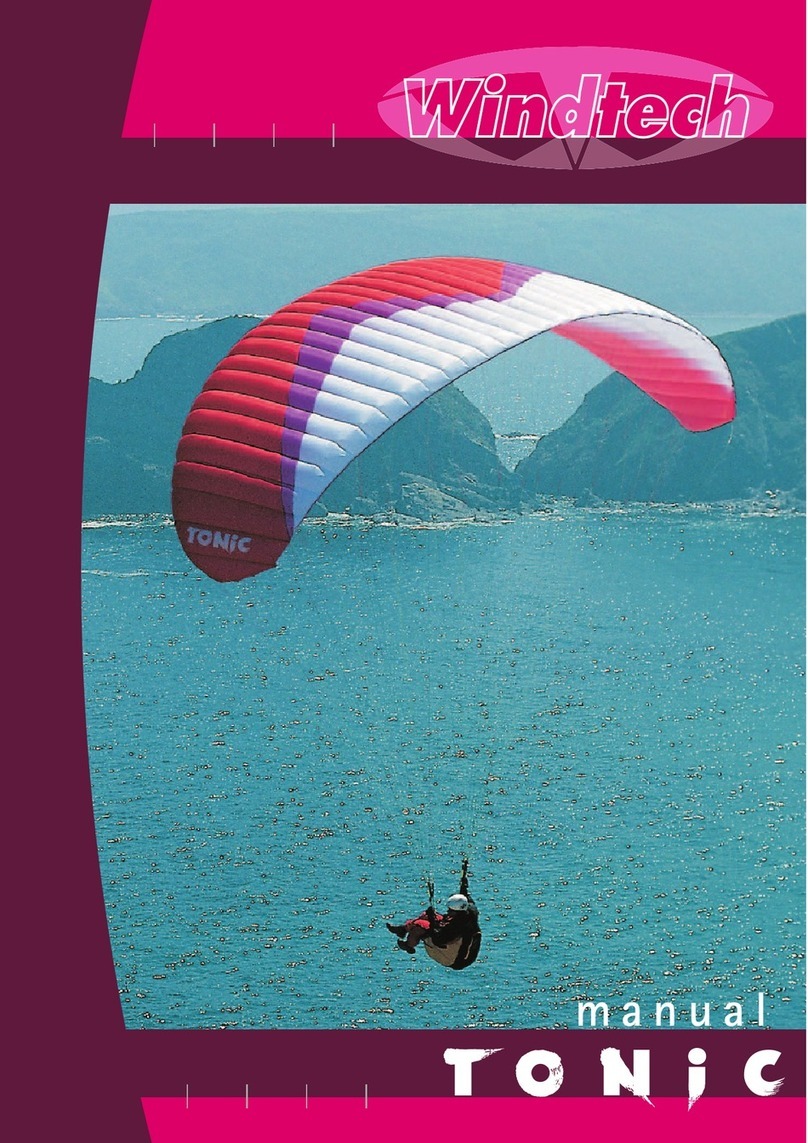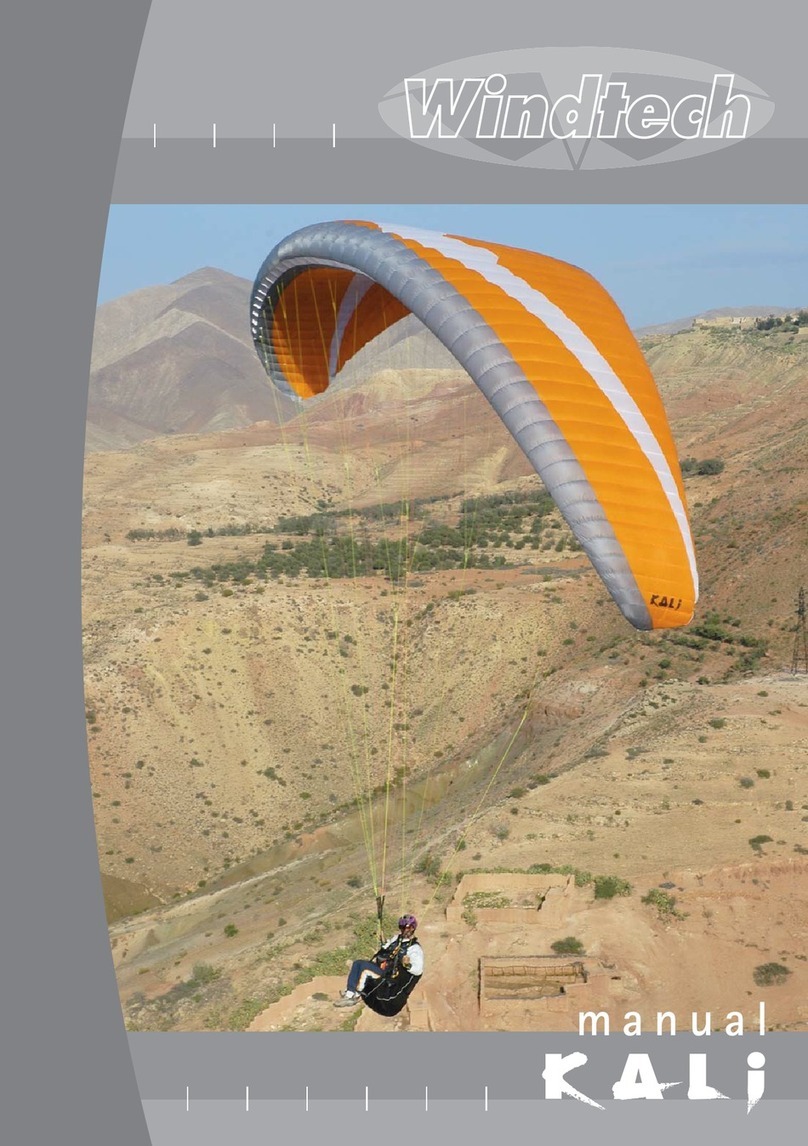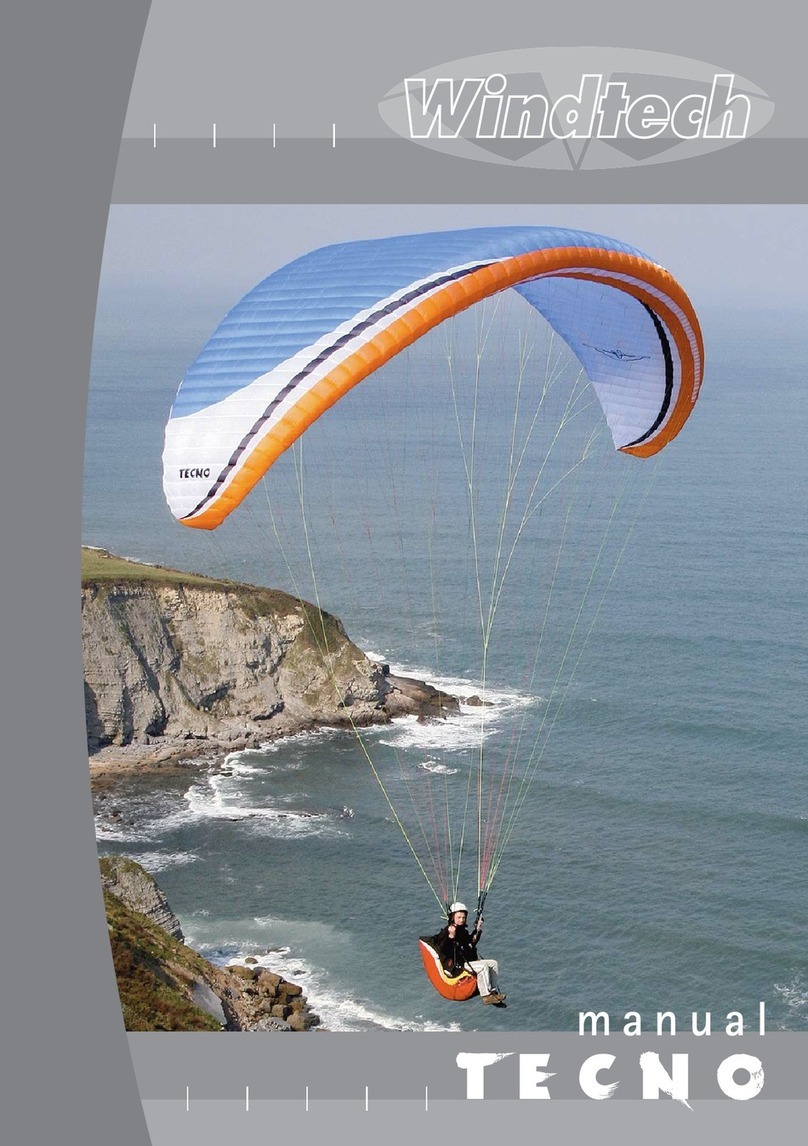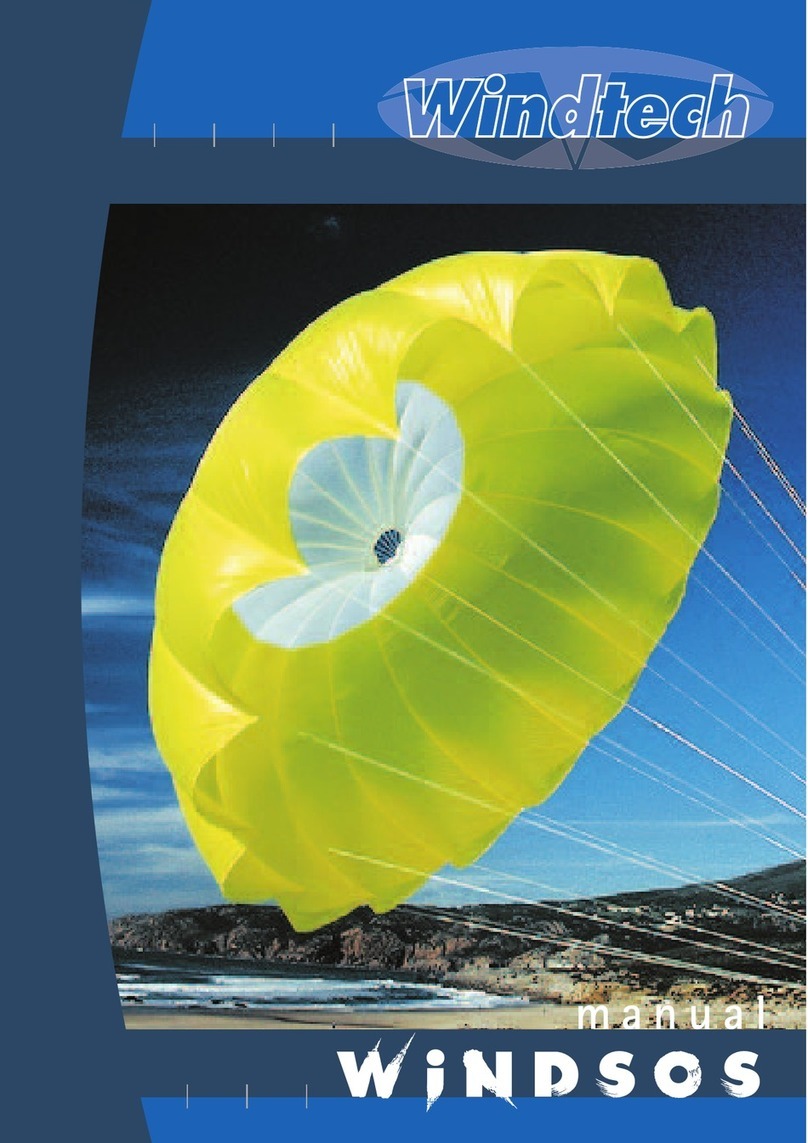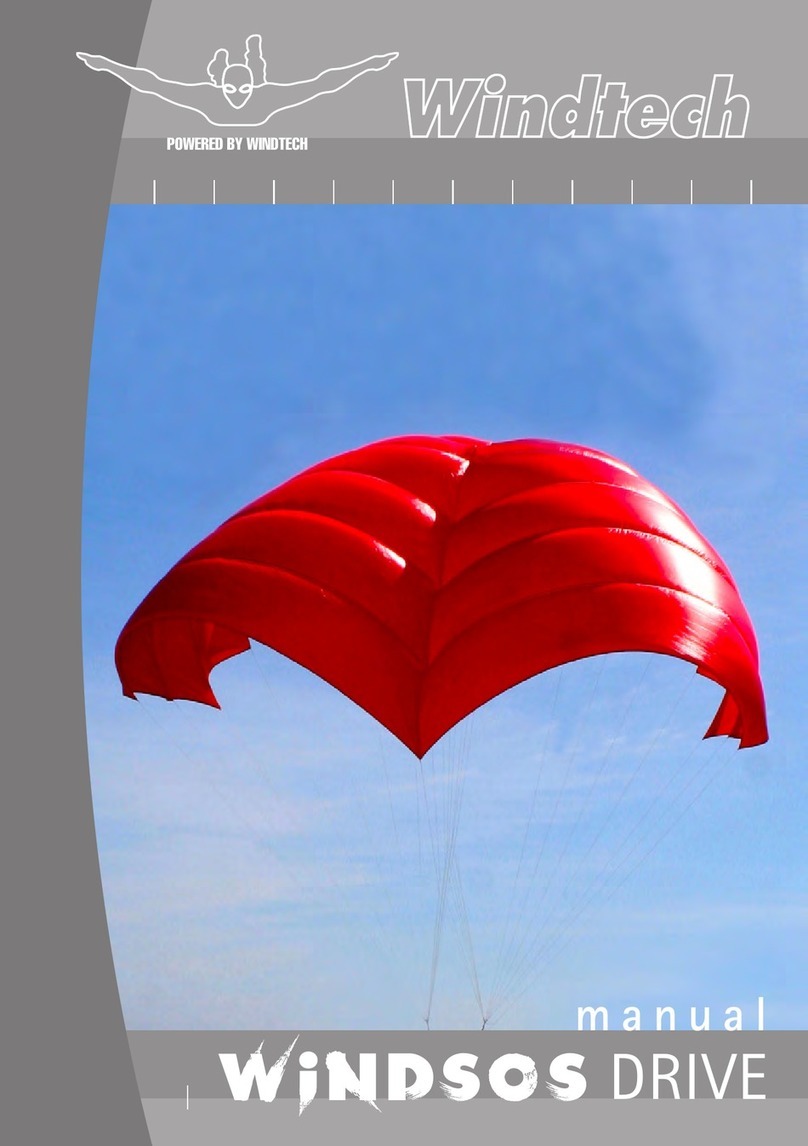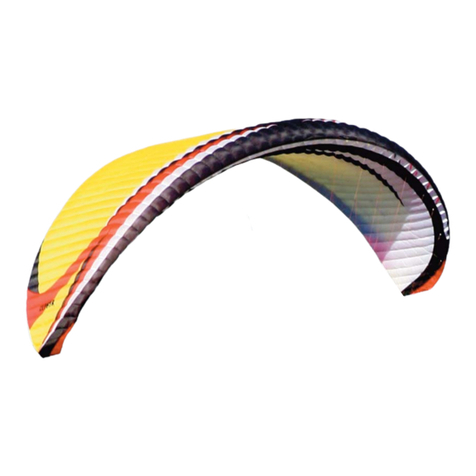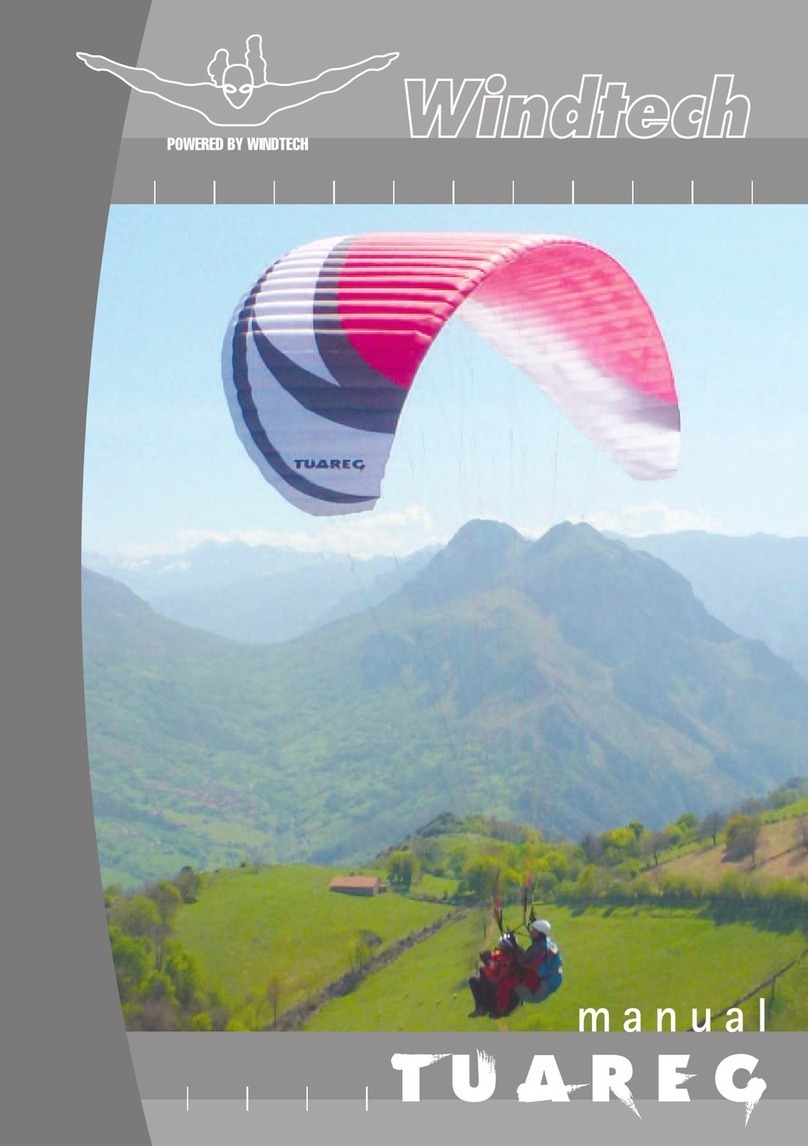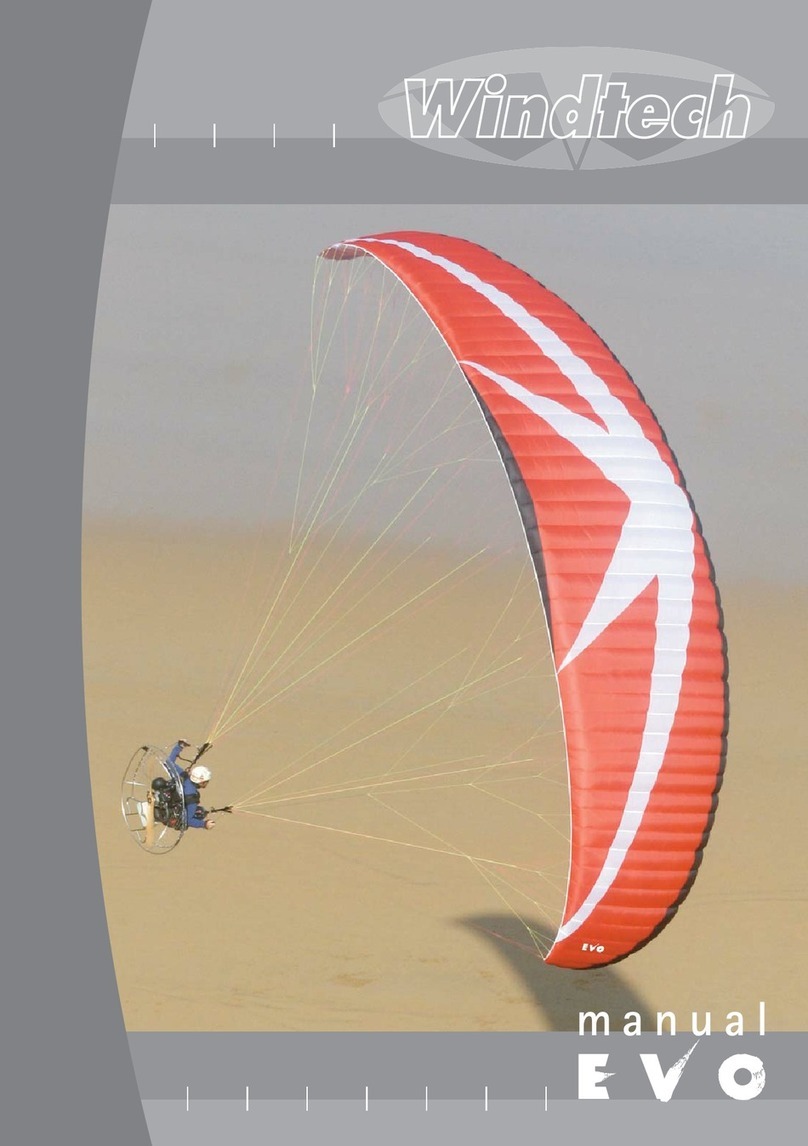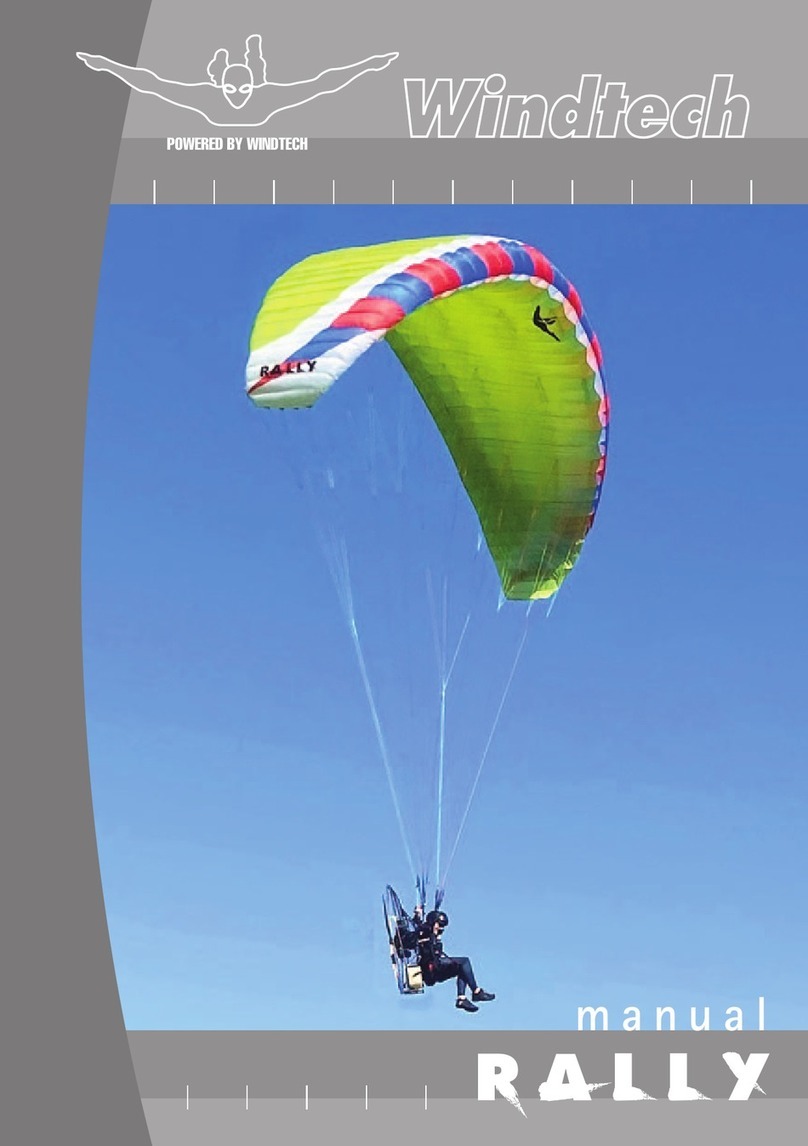
10
> flying in turbulence
Most pilots want to enjoy the pleasures of thermal and coss-country flight.
One thing to always consider is that normally these flying conditions are rougher, stronger and
sometimes unpredictable and more difficult to handle which can lead to unstable situations such
as collapses. There will always be some level of turbulence associated with thermals.
If you progress at a nice steady rate, and keep safe, you will find thermal flying will become a
pleasure. With qualified instruction you will actually learn faster, learning how to optimise your
thermal skills. A safety (SIV) course is something to consider, as these teach you how to deal cor-
rectly with unstable situations such as collapses, rapid descent manoeuvres, stalls ands spins, and
so you will get far more from your flying.
With the correct technique &qualified instruction the pilot can learn to help stop collapses by fly-
ing “actively” &recover the wing more quickly, by the giving the correct input, when collapses
occur. Remember, the glider is tested to recover and so it is always better to under-react than to
over-react. Over reacting to a situation can prevent the glider from self-recovering, and recover-
ing air speed, and cause it to enter further unstable situations.
-- asymmetrical tuck/collaps
An asymmetric tuck / collapse is when part (one side) of the wing ( say 20% or even anything up
to 90% of the span) tucks or collapses, usually induced by turbulence but sometimes also though
poor pilot control in turns and wing-overs.
The ZEPHYR-2 is tested and certified to automatically recover without correction by the pilot, but
with the correct input the pilot can minimise any turning, and height lose, and help the glider
recover more quickly.
There are 3 basic steps to follow immediately if you have a collapse:
1: Weight shift to the flying side of your glider (away from the collapsed side). This helps stop the
rotation &increases pressure in the wing in the inflated side.
2: If needed apply the correct amount of brake to the open (flying) side to slow any rotation (spi-
ral) induced by the collapse. Be very careful not to use too much brake as its possible to stall the
flying side of the glider, and enter further unstable situations which may be harder to recover from
than the collapse itself.
3: Once the glider has straightened out, or the spiral has slowed, smoothly pull down the brake on
the collapsed side, with a long stroke/pump, &the deflated side of the glider should re-inflate. As
the glider re-opens release the brake immediately but progressively.
With instruction &experience the above will become a reflex action, and the correct input to give
will become second nature to the experienced pilot.
